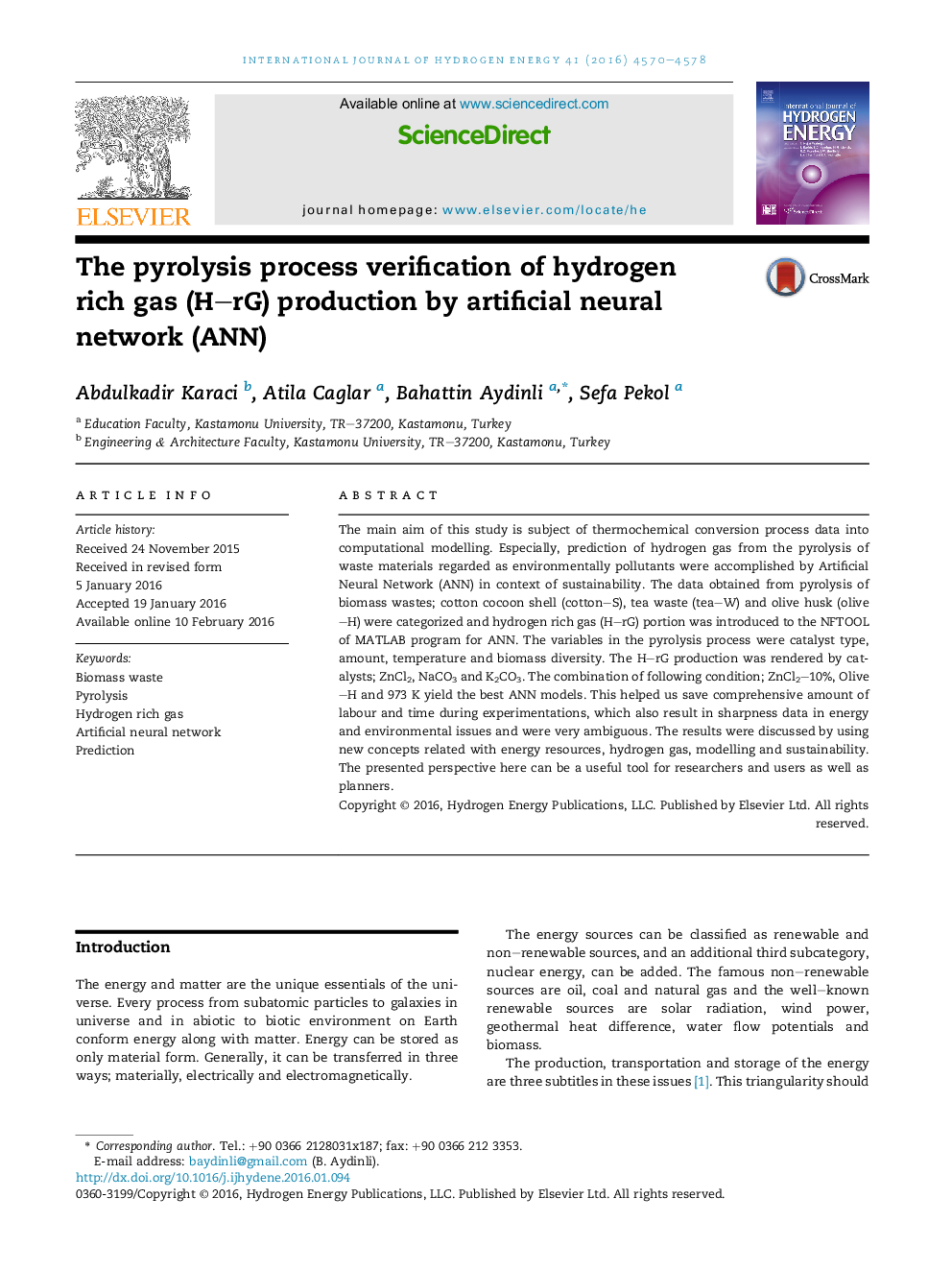| Article ID | Journal | Published Year | Pages | File Type |
|---|---|---|---|---|
| 1271145 | International Journal of Hydrogen Energy | 2016 | 9 Pages |
•Prediction of hydrogen rich gas production from pyrolysis of biomass wastes was accomplished by artificial neural network.•The data accumulated by thermochemical conversion process have opened new study area for the artificial neural network modelling.•A new way to produce hydrogen gas in the future was presented to planners and producers in terms of saving labour and time.
The main aim of this study is subject of thermochemical conversion process data into computational modelling. Especially, prediction of hydrogen gas from the pyrolysis of waste materials regarded as environmentally pollutants were accomplished by Artificial Neural Network (ANN) in context of sustainability. The data obtained from pyrolysis of biomass wastes; cotton cocoon shell (cotton–S), tea waste (tea–W) and olive husk (olive–H) were categorized and hydrogen rich gas (H–rG) portion was introduced to the NFTOOL of MATLAB program for ANN. The variables in the pyrolysis process were catalyst type, amount, temperature and biomass diversity. The H–rG production was rendered by catalysts; ZnCl2, NaCO3 and K2CO3. The combination of following condition; ZnCl2–10%, Olive–H and 973 K yield the best ANN models. This helped us save comprehensive amount of labour and time during experimentations, which also result in sharpness data in energy and environmental issues and were very ambiguous. The results were discussed by using new concepts related with energy resources, hydrogen gas, modelling and sustainability. The presented perspective here can be a useful tool for researchers and users as well as planners.
Graphical abstractFigure optionsDownload full-size imageDownload as PowerPoint slide
